Sketches of Spain
LCGC Europe
Research Group: Professor Maria Celia Garcia-Ãlvarez-Coque, Department of Analytical Chemistry, Faculty of Chemistry, University of Valencia, Valencia, Spain.
Research Group: Professor Maria Celia Garcia-Álvarez-Coque, Department of Analytical Chemistry, Faculty of Chemistry, University of Valencia, Valencia, Spain.
Research Focus: The group was set up in 1992 in the field of micellar liquid chromatography and focused on the analysis of drugs in physiological fluids, screening studies and the suppression of peak tailing for basic drugs. Subsequently, the group concentrated on more fundamental studies and chemometrics, with the aim of extracting the potential information contained in chromatographic signals and improving the separations, assisted by numerical methods. The group has a particular interest in the development of new optimization strategies, peak models, purity assays, deconvolution methods, and quantitative structure-retention relationships. Currently, it is involved in column characterization, development of clean analytical methods, bidimensional separations and fast chromatography.
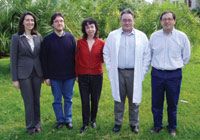
As well as the main researcher, the permanent staff is composed of three professors (Juan José Baeza-Baeza, José Ramón Torres-Lapasió and Samuel Carda-Broch), and a senior researcher (Maria José Ruiz-Ángel). Since 1992, 17 students in the group from different countries have obtained PhD degrees. The group has hosted several researchers from Argentina, Belgium, Brazil, China, France, Mexico and Nicaragua, and its members have worked in laboratories in Belgium, France, The Netherlands and the US. The main collaborations have been established with researchers from Laboratoire des Sciences Analytiques (Université de Lyon, France), Farmaceutisch Instituut (Vrije Universeit Brussel, Belgium), Department of Chemistry (University College London, UK), and van't Hoff Institute of Molecular Sciences (University of Amsterdam, The Netherlands).
E-mail: celia.garcia@uv.es
Research group: Professor Rafael Cela, group of chromatography and chemometrics, Laboratory of Analytical Chemistry, Institute of Research and Food Analysis, University of Santiago de Compostela, Santiago.
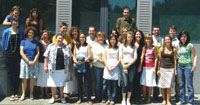
Research Focus: The two main goals of the group's activities are the development of sample preparation techniques for chromatography and capillary electrophoresis (CE) and the chemometrical optimization of separations using liquid chromatography (LC). In the first topic the objectives are the development of fast and efficient microtechniques using the lower possible amounts of organic solvents [solid-phase extraction (SPE)], [solid-phase microextraction (SPME), liquid-phase microextraction (LPME), matrix solid-phase dispersion (MSPD), etc.] introducing alternative materials (e.g., alternative formats and polymeric materials to SPME fibres) and the development of optimized sample preparation procedures using experimental designs.
Many applications of these sample preparation procedures consider persistent and emerging pollutants both in food and the environment, as well as aromas and food components. A special research topic is the use of SPME fibres to study photodegradation processes (photo-SPME), a technique that was developed by the group.
The second line of research consists of the development of simulated off-line optimization procedures for high performance liquid chromatography (HPLC). Over the years, the group has developed and improved the PREGA software package, which is freely distributed (http://www.usc.es/gcqprega/). Currently PREGA allows fully automated method's development using conventional chromatographic response functions as well as Pareto optimality specifically applied to chromatography. The use of powerful chemometrical tools and evolutionary algorithm engines provides highly efficient optimization of very complex separations.
Recently, some modules have been added to transfer separations between instruments, columns and laboratories, as well as specific modules for the optimization of liquid chromatography mass spectrometry (LC–MS) separations using Pareto optimality.
E-mail: qnrctd@usc.es
Research Group: Professor Elisabeth Bosch and Professor Marti Rosés, Solute–Solvent Interactions group. Departament de Quimica Analitica, Universitat de Barcelona, Barcelona.
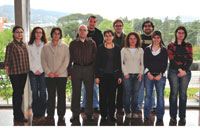
Research Focus: The group concentrates in two main areas: The first is devoted to modelling the retention in liquid chromatography (LC). A simple and powerful polarity model that relates the retention of non-charged analytes to the polarity of both the mobile and stationary phases and the polarity of the analyte has been developed. This model allows the simple transfer of retention data between different chromatographic systems (columns and mobile phases); predicts retention in both isocratic and gradient modes; and can also determine the hydrophobicity of most compounds, including drugs. The retention of ionizable analytes, based on the thermodynamic ionic equilibria in hydroorganic solvents, is also being investigated. This work leads to recommended procedures for the proper measurement of the pH in the hydroorganic mobile phases and allows successful relationships between the retention of acids and bases and working pH, ionic strength and temperature. Additionally, studies concerning the acidity of silanol groups present in silica-based stationary phases have led to a simple method to evaluate this acidity.
The second area of research is focused on capillary electrophoresis (CE) and electrokinetic chromatography (EKC) techniques. Appropriate pH buffers and fast high-throughput methods for the determination of pKa values by CE are developed. Additionally, the EKC research involves the characterization of the solvation properties and selectivity of pseudo-stationary phases. The ultimate aim is to develop methods to prepare phases (e.g., by mixing two compatible surfactants of different properties) with an appropriate selectivity for a specific analytical separation problem or solvation properties that emulate biological partition processes. Thus, biological properties of drugs and pollutants can be easily estimated from the measurement of retention in the electrokinetic system.
E-mail: e.bosch@ub.edu and marti.roses@ub.edu
Research Group: Professor Damià Barceló, Water and Soil Quality Unit, Department of Environmental Chemistry, Institute of Chemical and Environmental Research of Barcelona (IIQAB), Spanish Council for Scientific Research (CSIC), Barcelona.
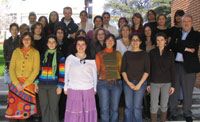
Research focus: The general objective of this team is to solve environmental problems, specifically in the area of water quality, through the development of new analytical methods for emerging contaminants (polar pesticides, surfactants, endocrine disruptors, pharmaceuticals, drugs of abuse, etc.).
The main research activities and expertise of the group are in the fields of advanced analytical chemistry based on mass spectrometric analysis and biosensors; transport, fate and bioavailability of priority and emerging organic pollutants and endocrine disruptors in water-soil systems and biota; and the evaluation of the sources and distribution of pollutants by chemometric analysis and modelling. The main analytical tools of the group are gas and liquid chromatography (GC and LC) coupled to tandem mass spectrometry (MS–MS) with triple quadrupole (QqQ), quadrupole-linear ion trap (Q-LIT) and quadrupole-time-of-flight (Q-TOF) analysers.
Previous achievements include the identification of new organic contaminants of industrial origin; the discovery of feminization effects in Carps in Spain; the first application in the EU of immunosensors for routine control of pesticides (in the Ebro river); and the study of alternative wastewater treatment methods (membrane bioreactors, MBR) to eliminate emerging contaminants such as surfactants, pharmaceuticals and polar pesticides.
All this work has a strong socioeconomic impact, which is promoted through active transfer of knowledge to both the private sector (e.g., Waters of Barcelona, AGBAR) and to the bodies responsible for the water policy (e.g., the Catalonian Water Agency, ACA).
The current group consists of six permanent members (Damià Barceló, Miren López de Alda, Mira Petrovic, Marinella Farré, Ethel Eljarrat and Elena Martinez), four post-docs, one technician and 14 PhD students. During the last five years, it has participated in 23 EU projects (coordinating two of them) and 20 national projects/contracts (coordinating five of them). Its scientific production surpasses 550 SCI (Science Citation Index) papers.
E–mail: dbcqam@cid.csic.es
Research group: Professors Guillermo Ramis-Ramos, Carlos Mongay-Fernández, Ernesto F. Simó-Alfonso and José M. Herrero-Martinez, Department of Analytical Chemistry, University of Valencia, Burjassot, Valencia.
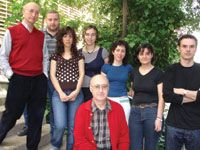
Research Focus: The aim of the group is to develop analytical systems and methods for the characterization and determination of complex mixtures of analytes, and the evaluation of sample properties related with them, in industrial, food and environmental samples. Particular attention is paid to high performance liquid chromatography (HPLC), capillary electrophoresis (CE), capillary electrochromatography (CEC) and ion-trap mass spectrometry (ITMS).
Applications involving multivariate treatment of the data and other chemometric approaches are also developed when required. They are also working on the synthesis and characterization of monolithic stationary phases for CEC. Applications in several fields, including surfactants and other components of cleaning products and authentification of quality edible oils, are being developed.
The current group consists of four permanent members, one post-doc and six graduate students, three of them supported by four-year grants. Occasionally, the group also has undergraduate students within a framework of interchange programmes and visitor researchers. The group is equipped with several HPLC and CE instruments and a micro-HPLC set-up, connected to ultraviolet visible (UV/vis), fluorimetric (F), evaporative light-scattering (ELSD) and refractometric detectors and with two ITMSs (ion trap mass spectrometers) provided with electrospray (ESI), chemical ionization (APCI) and photoionization (APPI) sources. The group has access to other instruments and techniques through the Experimental Research Central Facility of the University of Valencia (SCSIE, http://scsie.uv.es), which is located within the same Campus.
E-mail: ramis@uv.es
Research Group: Professors Vicente Ferreira and Juan Cacho, Laboratory for Flavour Analysis and Enology (LAAE), Department of Analytical Chemistry, Faculty of Sciences, Universidad de Zaragoza, Zaragoza.
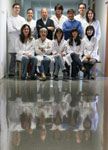
Research focus: Professors Vicente Ferreira and Juan Cacho head a research group consisting of seven permanent members and five PhD students which is recognized globally for its work on analytical aroma chemistry, particularly on wine aroma. The team has made original contributions to nearly all the aspects of the chemical study of aroma (isolament and identification of odorants, olfactometry, quantitative analysis, modelling, reconstitution) as well as work on the genesis of wine aroma.
The research focuses on three main areas. The first is the continuous development and improvement of analytical methods for the analysis of relevant aroma and flavour molecules to increase the levels of automation, miniaturization and speed of the procedures. As some aroma molecules are active at low levels (even under ngL–1 ) and have characteristics that make analysis difficult (polarity, instability, poor MS characteristics, strong matrix interactions, involvement in redox equilibria) the group has specialized in complex analysis, requiring derivatization, thorough isolation schemes and gas chromatography–negative chemical ionization–mass spectrometry (GC–NCI–MS), gas chromatography–mass spectrometry–mass spectrometry (GC–MS–MS) or gas chromatography–gas chromatography–mass spectrometry (GC–GC–MS).
The second area of research is the study of the relationship between chemical composition and aroma perception, by combining instrumental, sensory and data analysis. The long-term aim is to be able to model (and understand) the interactions between groups of odorants and tastants to create the sensory perception. However, the pragmatic everyday work is trying to define the genuine chemical-quality factors of a product. The third research area is the study of the processes in which the aroma compounds are formed or degraded (fermentation, enzymatic action, ageing, oxidation, external contamination...) with the obvious aim of improving the flavour/odour characteristics of a product.
E-mail: vferre@unizar.es
Regulatory Deadlines and Supply Chain Challenges Take Center Stage in Nitrosamine Discussion
April 10th 2025During an LCGC International peer exchange, Aloka Srinivasan, Mayank Bhanti, and Amber Burch discussed the regulatory deadlines and supply chain challenges that come with nitrosamine analysis.












